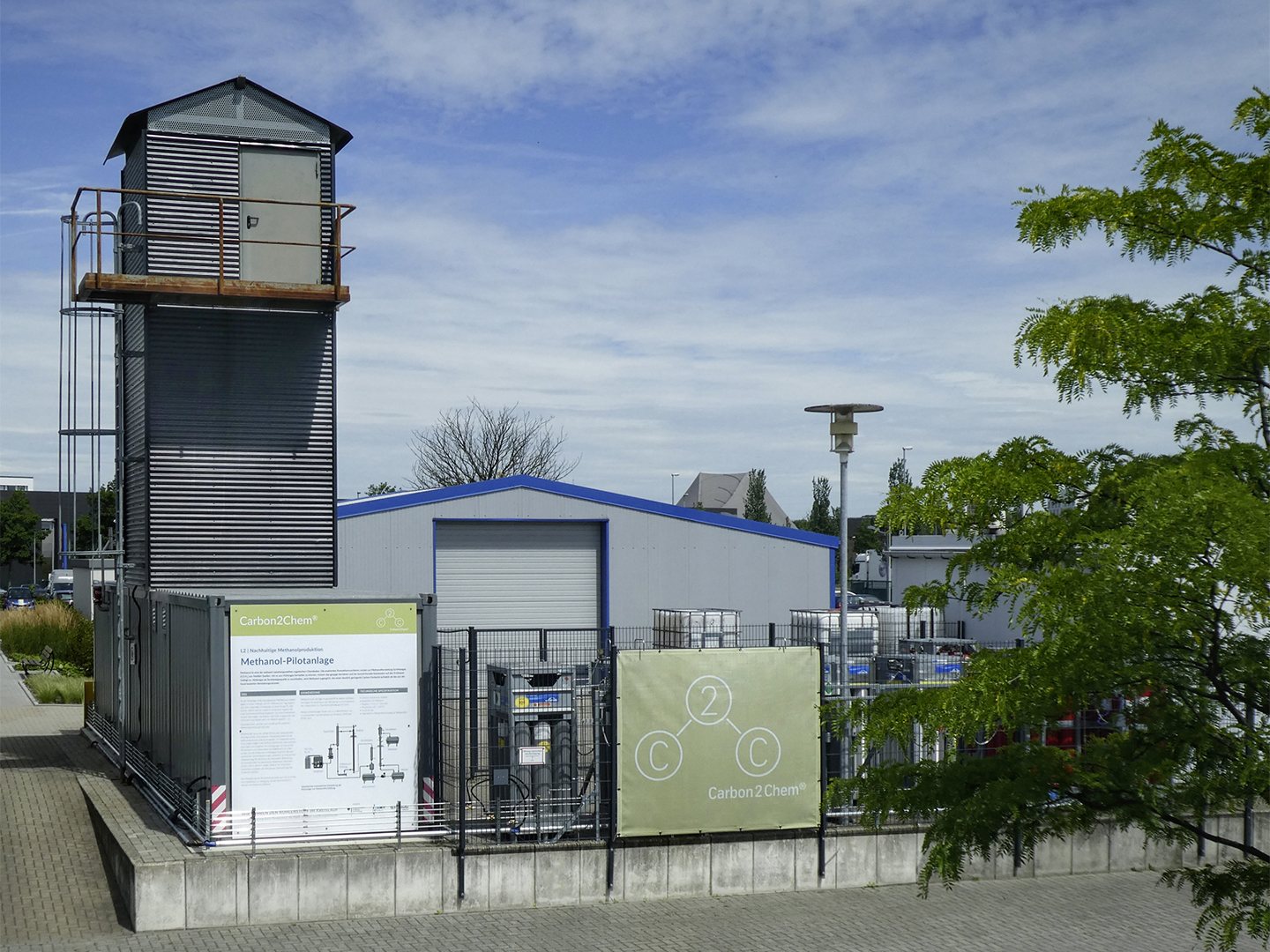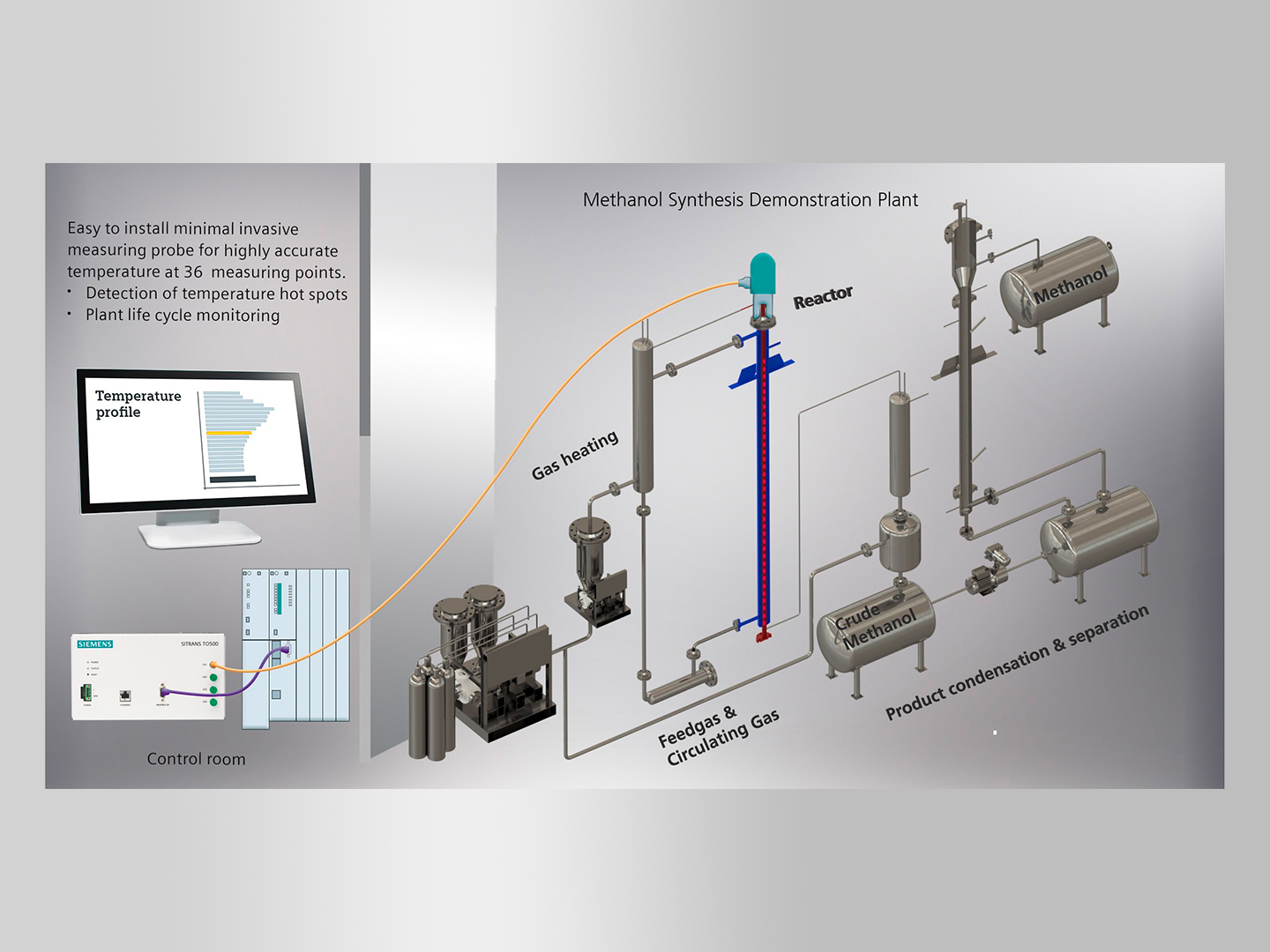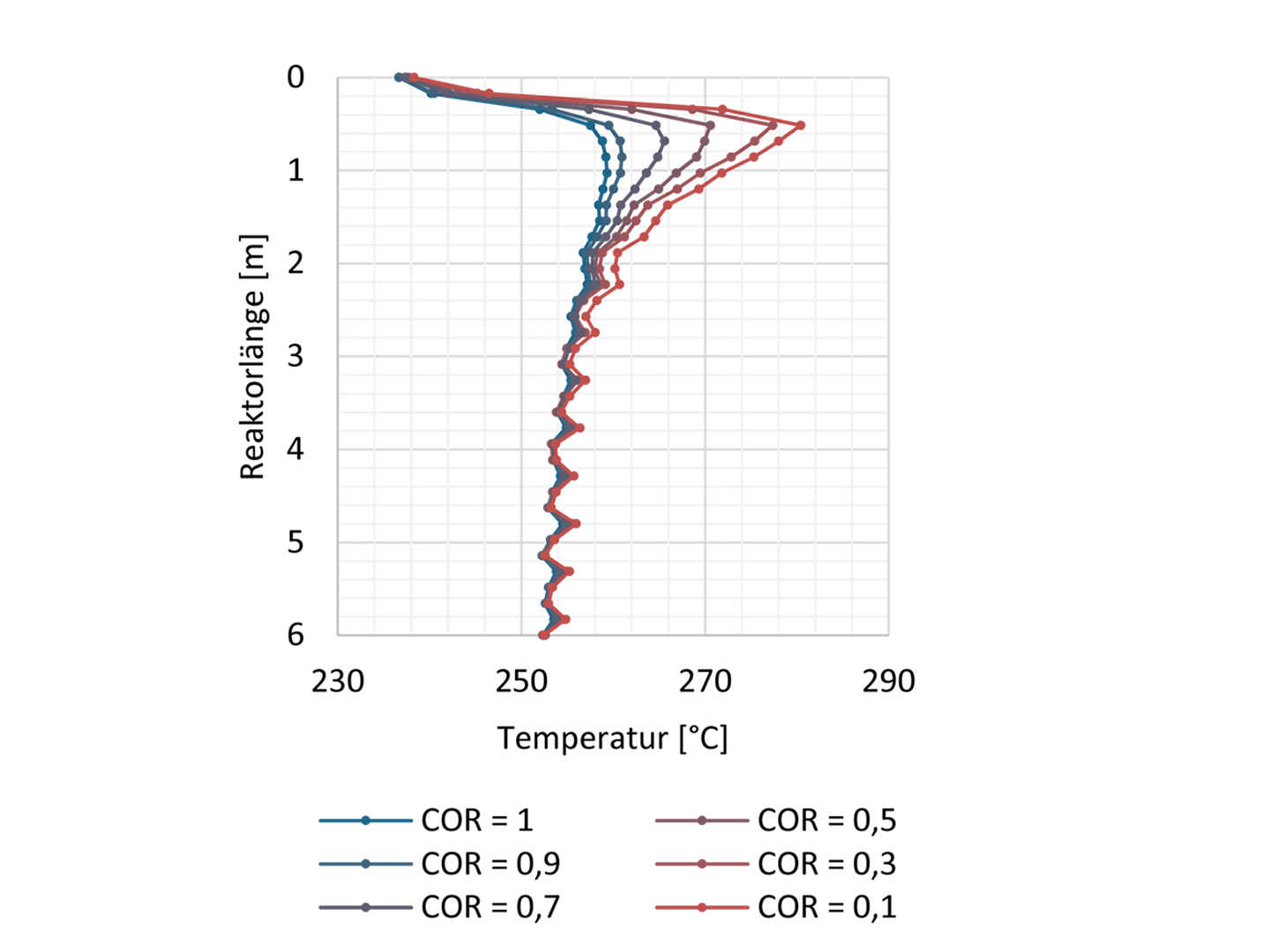Biorefinery
Steel mill gases as raw material for green methanol
Methanol is one of the world's most important compounds and is used, among other things, as a basic chemical or fuel. Its production is still mainly based on fossil raw materials such as natural gas or coal. In view of climate change, sustainable alternatives must be developed. Fraunhofer UMSICHT is working on the extraction of methanol from steel mill gases and sustainably produced hydrogen in the Carbon2Chem® project. The researchers are already successfully operating a demonstration-scale plant on the institute's premises in Oberhausen. In the next step, tests under real conditions are planned at a steel mill in Duisburg.



The steel industry is one of the biggest emitters of greenhouse gases in Germany[1], accounting for about 6 percent of the total. For this, the steel mill gases produced during steel production are partly responsible. They contain hydrogen (H2), nitrogen (N) and carbon dioxide (CO2), among other things, and are mostly incinerated or flared today. If the steel mill gases are instead recycled and recirculated, this holds enormous potential on the way to a more climate-neutral industry. This is precisely where the work of the researchers at Fraunhofer UMSICHT comes in: They have succeeded in demonstrating the production of methanol on the basis of hydrogen and gases that correspond to steel mill gases in their composition.
The most recent success was continuous methanol production using a demonstration plant over a five-week period. "Initially, the plant ran on carbon dioxide and hydrogen for 20 days, as this corresponds to the design point of the plant. Subsequently, we varied the composition of the feed gas and adjusted the proportions of carbon monoxide, carbon dioxide, nitrogen and hydrogen to the composition of steel mill gases," explains Dr. Andreas Menne, head of the Low Carbon Technologies department at Fraunhofer UMSICHT. A total of 1700 liters of raw methanol - corresponding to about 1000 liters of methanol – were obtained during this test series.
From laboratory scale to demonstration plant
Fraunhofer UMSICHT has been researching the topic of methanol synthesis from steel mill gases for more than five years. In the beginning, a basis for the practical tests had to be created by investigating the influence of the operating parameters pressure, temperature and gas flow rate with different gas compositions. "This gave us far-reaching insights into the behavior of the catalyst, on which we built on later," explains Andreas Menne. In parallel, the researchers developed models to simulate the process of methanol synthesis. Followed by the first promising experiments in the laboratory and scaling up – the larger laboratory plant already had a production capacity of 50 ml of methanol per hour.
The demonstration plant currently in operation produces 2 liters per hour. At its core, it is based on an existing container plant that already had key features of a production plant – recirculation of unreacted feed gases and reactor cooling via a boiling water circuit. "To further optimize the processes, we combined simulation and experimental studies at demonstration scale," says Andreas Menne. "The results of the process simulation represent reality very accurately. We can calculate economic efficiency and CO2 savings and thus optimize the operation of a production plant in perspective."
Operation with real steel mill gases
Unlike the laboratory plants, which have already been operated with cylinder gases and purified steel mill gases, the demonstration plant has only been working with cylinder gases so far. Therefore, the next step will be to use cleaned gases directly from the steel mill. This is expected to provide further insights into the design and operation of a large production plant. "At the same time, we would like to further link the results from the process simulation and the operation of the plant," says Andreas Menne. For this purpose, a so-called digital twin of the plant is currently being created. In the future, it should be possible to control the plant in such a way that it can respond in advance to fluctuating boundary conditions such as hydrogen availability, gas volume flows and gas compositions. Necessary maintenance intervals, for example to change or regenerate the catalytic converter, could also be planned precisely.
After the completion of this test phase in February, the demonstration plant will be moved from its current location at Fraunhofer UMSICHT in Oberhausen to the Carbon2Chem® technical center at a steel mill in Duisburg in 2022. Here it will initially be operated under real conditions until the end of the project term in May 2024. Parallel to this, further plant capacities will be built up in order to be able to work flexibly on possible CO2 sources on the topic of methanol synthesis in the future.
Methanol production binds CO2
The researchers at Fraunhofer UMSICHT are very satisfied with the results so far. Andreas Menne: "If we succeed in further scaling up, the technology has the potential to bind enormous amounts of CO2 from industrial gases and to produce a product with methanol that simultaneously secures our mobility and can be used as a basic chemical." By using the resulting raw materials from one industry in the next, a closed carbon cycle is created, he says.
[1] https://www.bmwi.de/Redaktion/DE/Pressemitteilungen/2021/06/20210621-spitzengespraech-der-stahlindustrie.html
Last modified:
 Fraunhofer Institute for Environmental, Safety and Energy Technology UMSICHT
Fraunhofer Institute for Environmental, Safety and Energy Technology UMSICHT